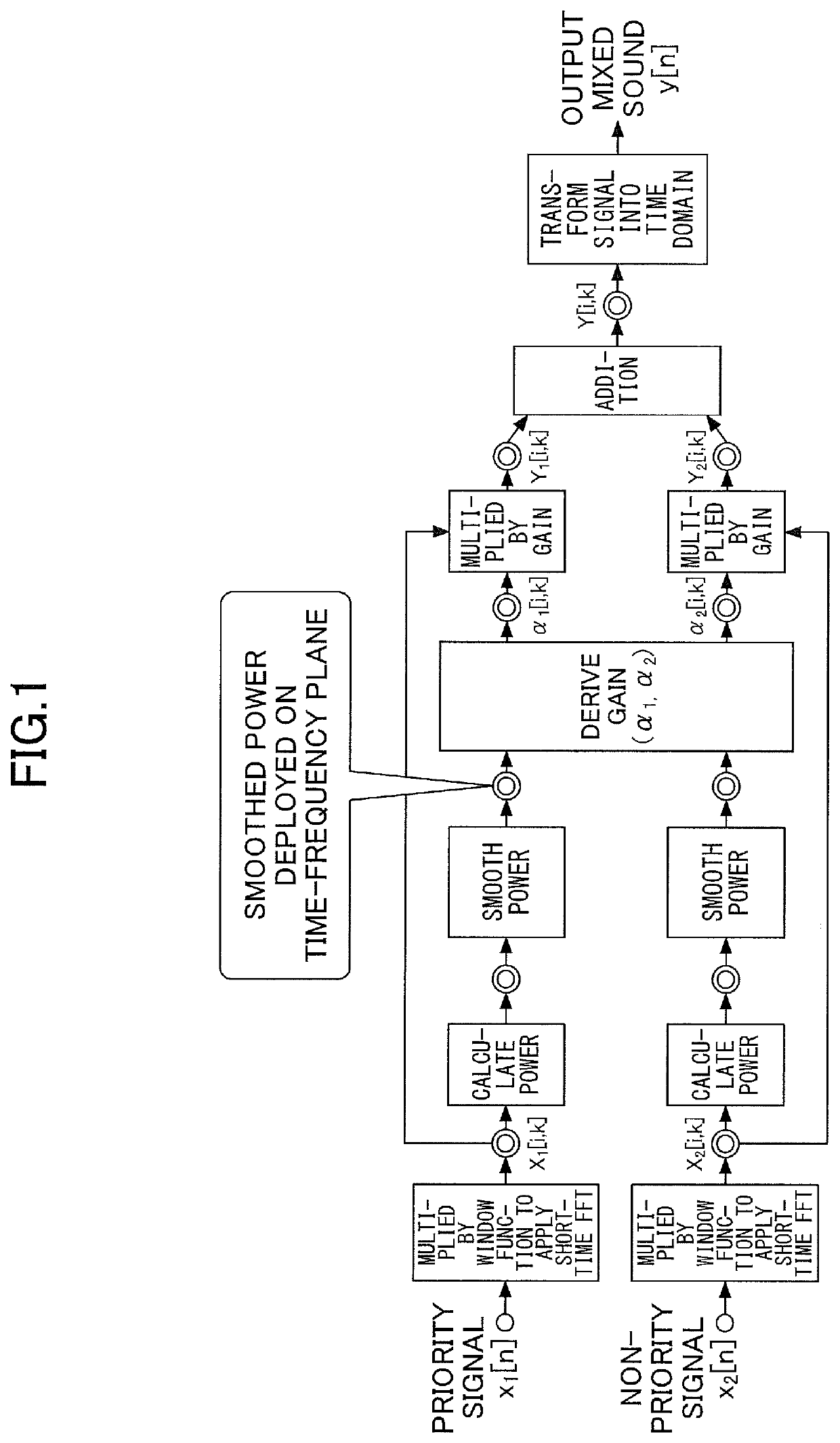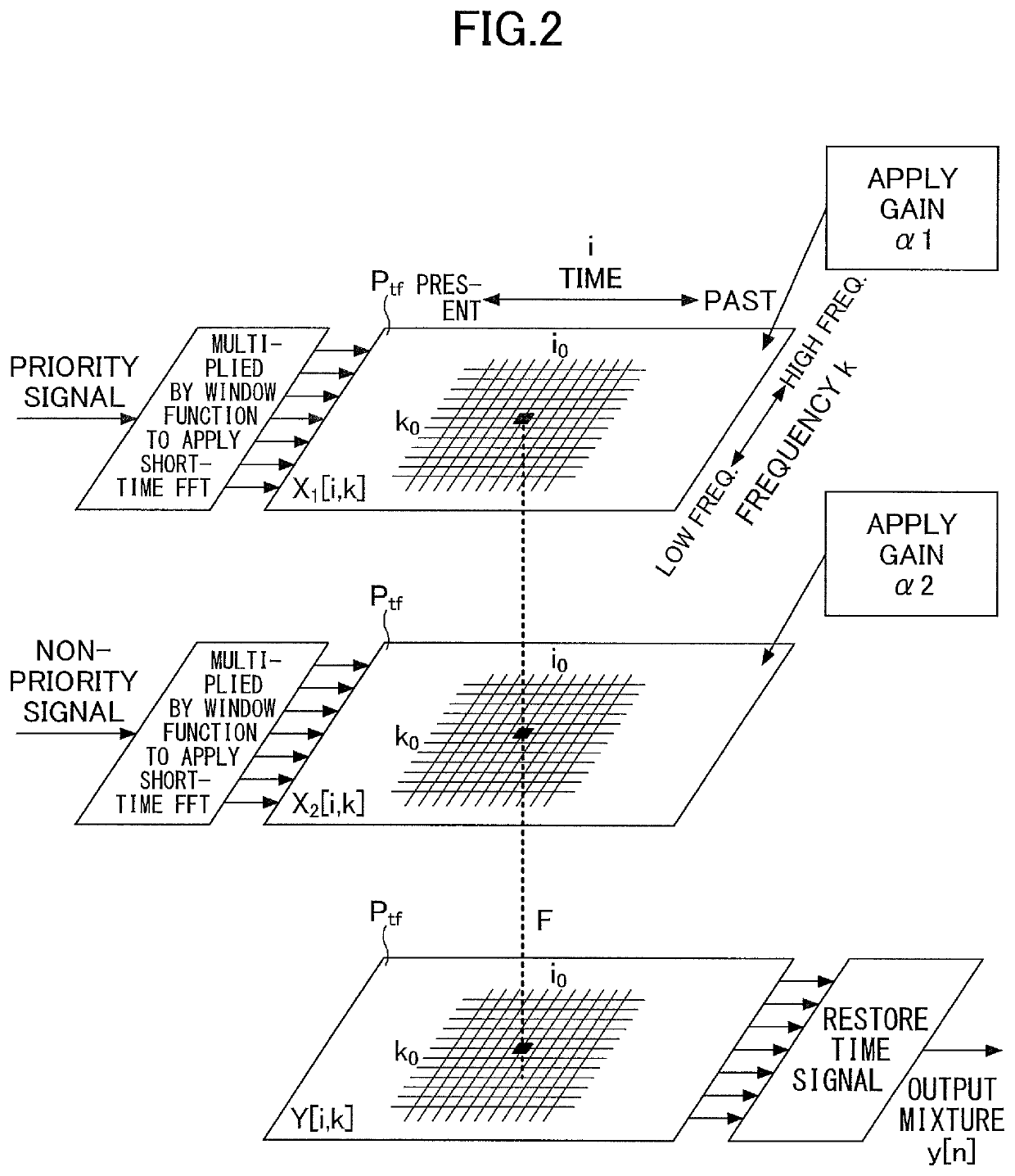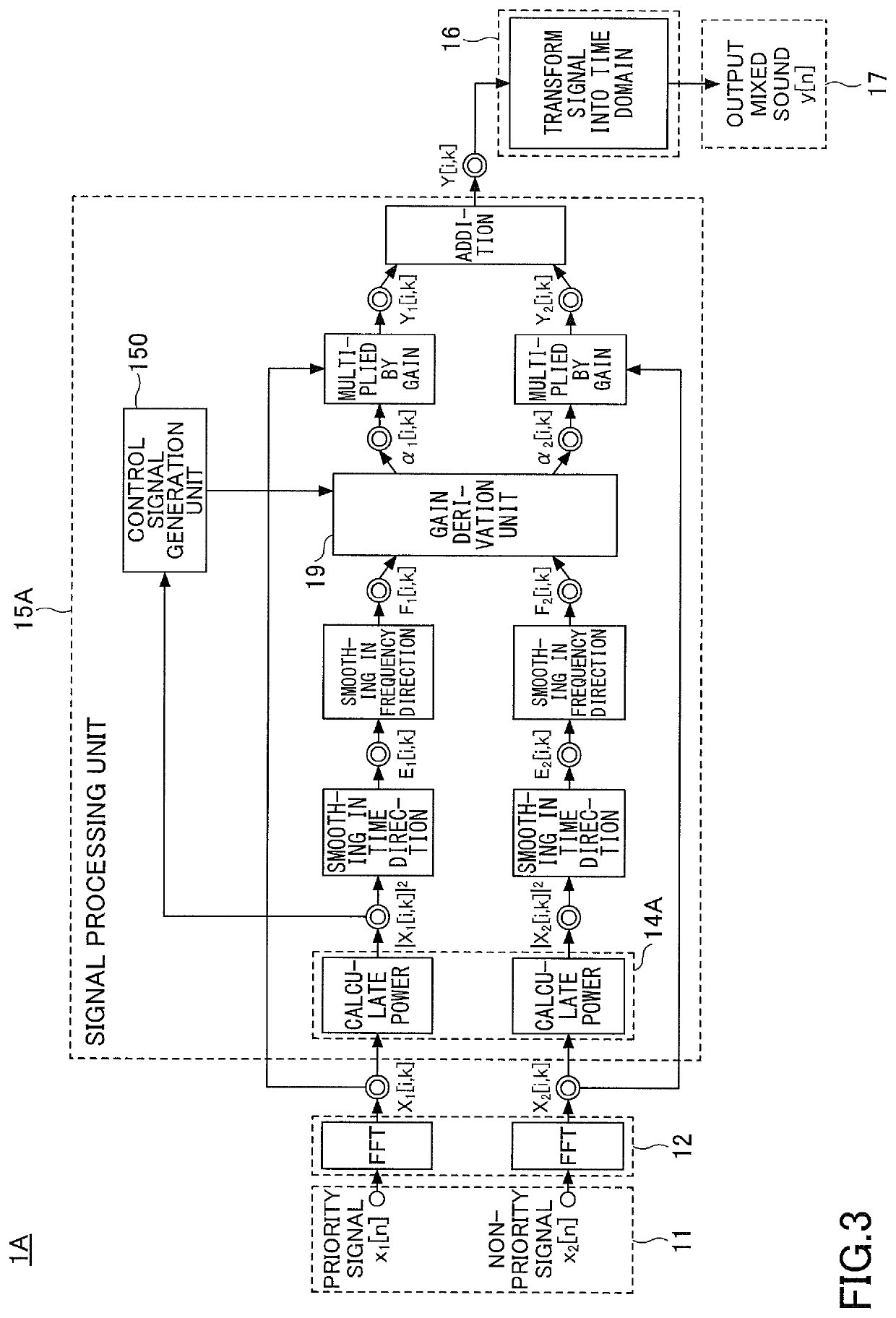Mixing device, mixing method, and non-transitory computer-readable recording medium
a computer-readable recording medium and mixing device technology, applied in the direction of instruments, electrophonic musical instruments, gain control, etc., can solve the problems of side effects of non-priority sound, and achieve the effect of reducing the degradation of non-priority sound and producing more natural mixed sound
- Summary
- Abstract
- Description
- Claims
- Application Information
AI Technical Summary
Benefits of technology
Problems solved by technology
Method used
Image
Examples
first embodiment
[0041]FIG. 3 is a schematic diagram of a mixing device 1A of a first embodiment. The mixing device 1A includes a signal input unit 11, a frequency analysis unit 12, a signal processing unit 15A, a frequency-time transformation unit 16, and a signal output unit 17. The signal input unit 11 receives multiple input signals to be mixed. The input signals are, for example, audio signals, which include a priority sound signal x1[n] such as a voice and a non-priority sound signal x2[n] such as a background sound.
[0042]The frequency analysis unit 12 deploys the input signals of the PR sound and the non-priority sound on a time-frequency plane by frequency analysis. Any method can be used for the frequency analysis, such as short-time FFT (Fast Fourier Transform), wavelet transformation, transformation by filter banks, transformation to a time-frequency distribution such as the Wigner distribution, and the like. In the embodiment, the input signals are multiplied by a window function and are...
second embodiment
[0081]FIG. 5 is a schematic diagram of a mixing device 1B of a second embodiment. The same elements as in the mixing device 1A of the first embodiment are attached with the same reference symbols, to omit duplicate descriptions. In the first embodiment, the vivid signal is generated based on the power (square of the amplitude) of the priority sound deployed on the time-frequency plane. In the second embodiment, the vivid signal is generated based on the logarithm of the absolute value of the priority sound deployed on the time-frequency plane.
[0082]If evaluating the priority sound and the non-priority sound by the power |X1[i,k]|2 and |X1[i,k]|2 as in the first embodiment, taking the square doubles the bit length. In the case of implementing the smart mixer with a logic device such as an FPGA, the processing amount increases.
[0083]Meanwhile, in the case where a graphical display device is provided on the smart mixer to display the power on the time-frequency plane either in shade or...
third embodiment
[0094]In the third embodiment, when smoothing in the frequency direction, auditory characteristics of human beings are reflected. In the embodiment, in order to generate a vivid signal, an absolute spectrum Fv[i,k] is obtained by the first frequency-direction smoothing, and a spectrum Gv[i,k] representing a global outline is obtained by the second frequency-direction. Fv[i,k] and Gv[i,k] are obtained by Formula (7) and Formula (8), respectively, as described above.
[0095]When smoothing is performed by Formula (7) and Formula (8), the effect of the smoothing is identical at all positions on the frequency axis. However, the auditory filter of human beings has characteristics of being narrower at lower frequencies and of being wider at higher frequencies. In other words, the auditory resolution is higher in a lower frequency band and lower in a higher frequency band.
[0096]If attempting to match the smoothing process in the frequency direction with the auditory characteristics of human b...
PUM
 Login to View More
Login to View More Abstract
Description
Claims
Application Information
 Login to View More
Login to View More - R&D
- Intellectual Property
- Life Sciences
- Materials
- Tech Scout
- Unparalleled Data Quality
- Higher Quality Content
- 60% Fewer Hallucinations
Browse by: Latest US Patents, China's latest patents, Technical Efficacy Thesaurus, Application Domain, Technology Topic, Popular Technical Reports.
© 2025 PatSnap. All rights reserved.Legal|Privacy policy|Modern Slavery Act Transparency Statement|Sitemap|About US| Contact US: help@patsnap.com



